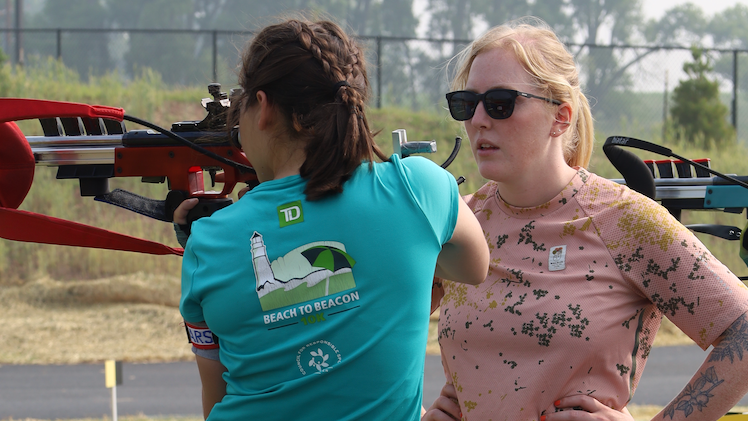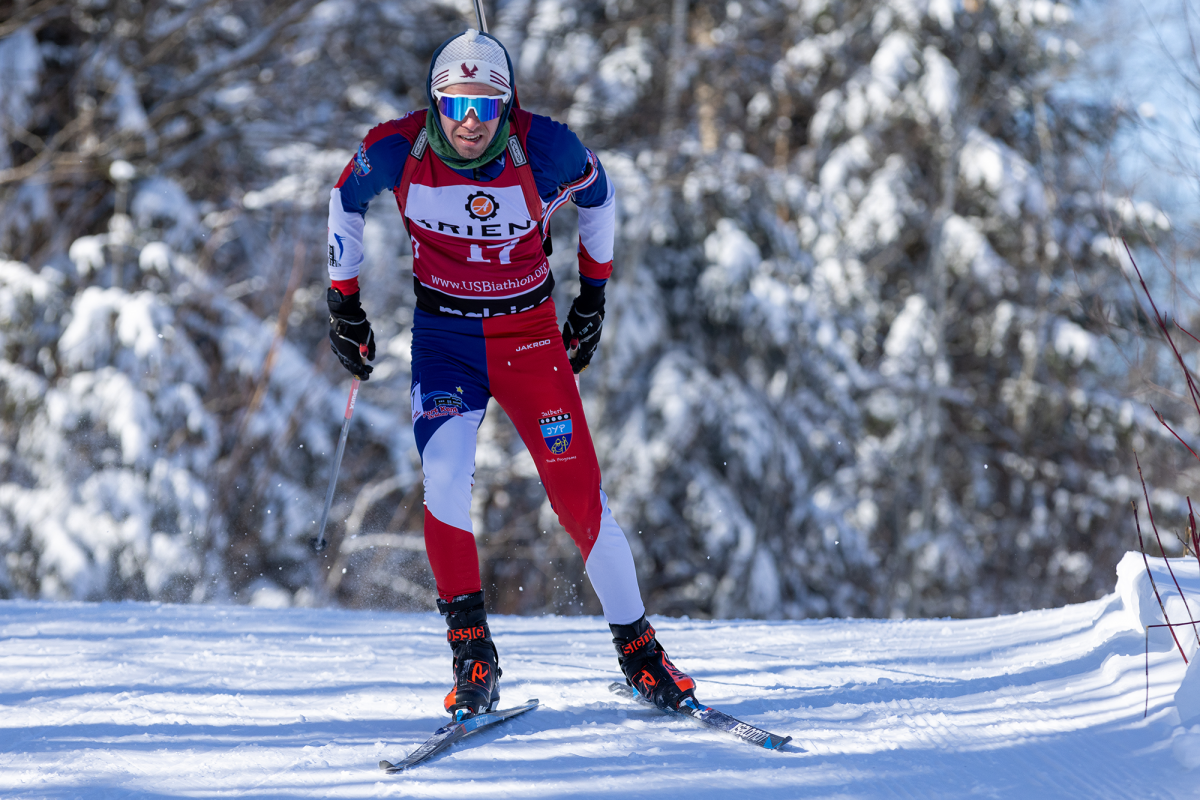
At the front of the race, Sunday’s World Cup men’s relay in Antholz-Anterselva was not especially exciting.
Although the time gaps weren’t huge, there were few lead changes: after the first handoff, France took the lead and never looked back, remaining there for the rest of the race. After that point, Germany sat in second, Austria in third, and Russia in fourth: at each exchange, despite the intervening 7.5 kilometers, the scene was the same.
A bit further back, however, the North American teams had a more interesting time.
Brendan Green led things off for the Canadians, and he wasn’t in top form; Biathlon Canada reported that he was “under the weather.”
“A hard day at the office for me – racing sick is never fun,” Green tweeted after the race to explain his split.
The top-ranked Canuck used five spare rounds – almost half of the team’s total tally – to clean his ten targets, but thanks to the special rules that allow the extra bullets during relays, he managed to avoid skiing the penalty loop. Green also chalked up the fifth-fastest course time. He tagged off in 13th, roughly a minute behind the leaders.
From there, the Canadians shot upwards, eventually reaching seventh place, tying their best-ever World Cup finish.
The pivotal effort came from Jean Phillipe Le Guellec, who used only a single spare round and actually made up time on the leaders during the second leg.
“JP did his thing and put the ball in our court,” teammate Scott Perras told FasterSkier.
It was in his court in particular: as the third-leg racer, Perras took the tag from Le Guellec and was faced with the challenge of staying inside the top ten. While his ski time was competitive, Perras was unable to excel on the shooting range, using a total of four spare rounds and skiing the team’s only penalty loop.
“I struggled in the prone and took a penalty loop, which hurts even more now,” Perras said, imagining what the team could have achieved with better shooting.
By the time he tagged off, the Canadians had dropped one spot to ninth. Finally, Nathan Smith took over, and took the responsibility of turning a good result into a great one.
Smith had just been promoted to the World Cup after racing on the IBU Cup earlier this season. There, he had collected a podium finish, a rarity for North Americans; in that sense, he had the experience to ski towards the front of the race.
And even though the World Cup is much more competitive, Smith delivered. Like Le Guellec, he used only one spare round to drop his ten targets, maintained the same gap to the leaders, and moved up two spots to seventh.
“[The result] matches the team’s personal best,” Perras said. “Seventh is awesome. We will take the positives from this one: considering everything, it’s a great result and I would not be surprised if results like this start to become regular.”

The U.S. team joined the Canadians in the top ten, which in itself was historic; the two countries have not had simultaneous top-ten relay finishes in at least the last five years. For the Americans, the result was both encouraging and disappointing; like the Canadians, they racked up eleven spare rounds, which is too many to be competitive at the very top of the field.
Lowell Bailey led off for the U.S. and had an uncharacteristically error-filled standing stage, using all three spare rounds and still skiing two penalty loops. He left the team in 18th – like Canada, not where it wanted to be.
“Today was not my day in standing,” Bailey told FasterSkier. “My leg was going great until four misses with the first five shots in standing! I ended up with two loops and more than a minute behind the leaders. It was definitely a sub-par performance from my side.”
Luckily, Jay Hakkinen and Tim Burke each turned in strong races, moving the U.S. up to 12th and then 8th. Hakkinen missed a single shot, which he easily remedied using a spare round.
“I was happy with my leg, especially since it was high risk shooting in order to work my way forward,” he wrote in an e-mail. “I worked very hard this week on my skiing and shooting, and it helps my confidence going into the short break to have a good race.”
Burke didn’t do quite as well on the range, using three spare rounds in standing, but had the fourth-fastest ski time among all third-leg racers was able to catapult his way past several more teams.
Finally, habitual anchor skier Leif Nordgren took the tag and in doing so returned to action after a two-week break from the World Cup. That hiatus could explain that he was slightly off his game; usually a sharp shooter, Nordgren used four spare rounds.
Bailey was still pleased with the youngest team member’s performance.
“Leif, who hadn’t had an opportunity to race here yet, put down a solid anchor leg and kept us in tenth place,” he said.

And despite the ups and downs, Hakkinen said that the team was happy with their effort.
“The relay showed our teams strength and potential, and a few of our weaknesses,” he explained, saying that they now had plenty to work on as the World Cup adjourns for two weeks.
For Hakkinen, he’s look for a gain – even a small one – in his ski times when competitions resume in Oslo, Noway in February.
“ Over the next week I will be with the team altitude training,” he wrote. “Looking
towards Oslo, my top priority is to make the mass start. I have now been on two reserve lists, and in the last mass start they took two reserves but I was the third. Therefore, I hope to step up a level in the next World Cups.”




